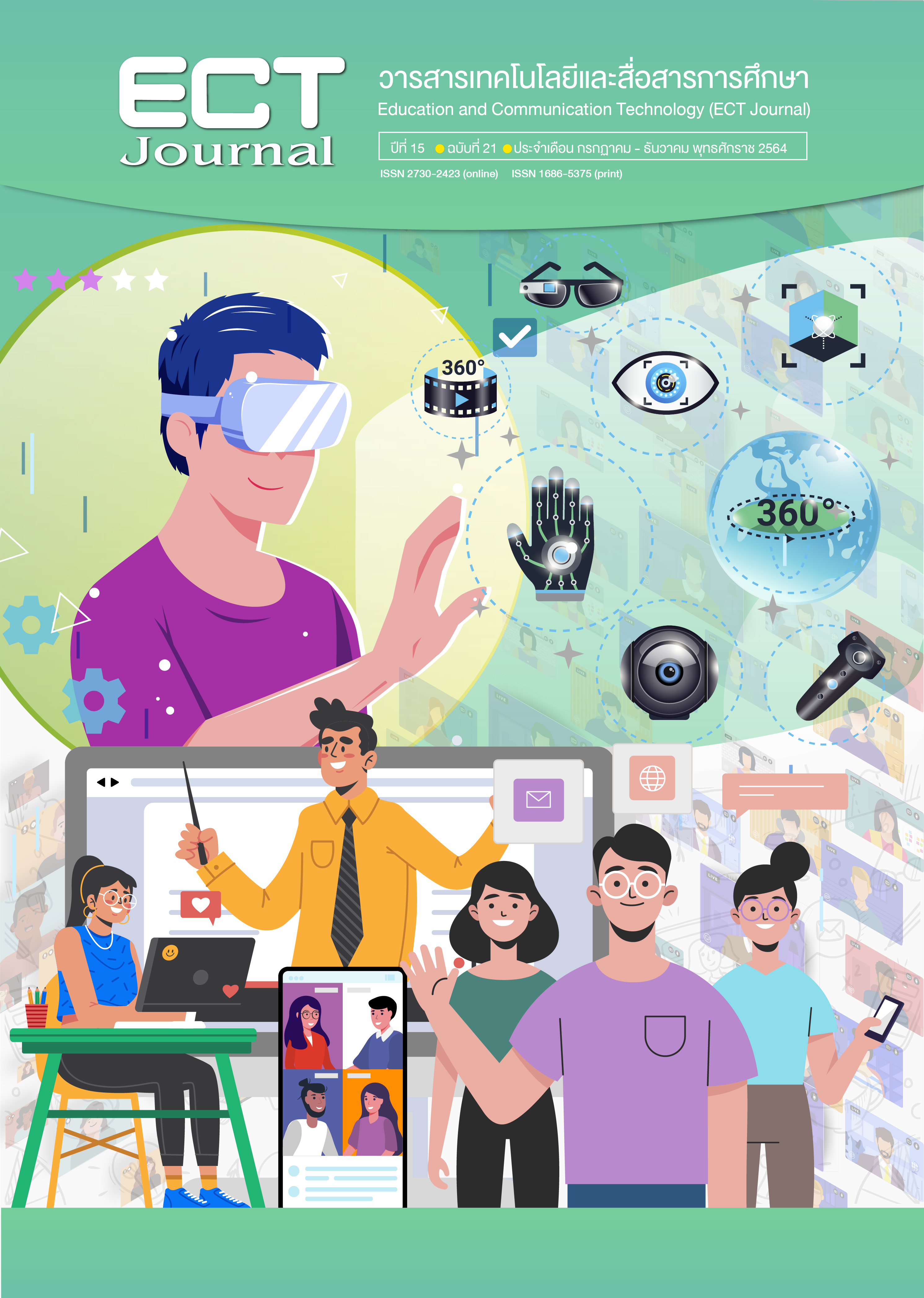Basic Concept and Elements of Immersive Learning to Enhance Cultural Intelligence
Keywords:
Basic Concept and Elements, Immersive Learning, Cultural Intelligence QuotientAbstract
Immersive Learning management is a simulated environment by virtual technologies with sociotechnical-pedagogical usability which enhances learning and cultural intelligence Quotient (CQ). Design recommendations are three dimensions that addresssocio technical usability, socio-pedagogical usability and technical-pedagogical usability. To achieve those, the required elements relating to effective use are, a variety of technologies supporting learning subjects, the technologies which allow learner’s autonomous and lastly, realism that connects the real world with virtual world. In order to enhance learning flow, and presence technology (from the learner’s perspective) to display learner personality, attitude and behavior which is an important factor to effectively to effectively develop cultural intelligence.
References
กิดานันท์ มลิทอง. (2548). เทคโนโลยีและสื่อสารเพื่อการศึกษา. โรงพิมพ์อรุณการพิมพ์.
สำนักงานเลขาธิการสภาการศึกษา. (2562). รายงานการศึกษา เรื่อง แนวปฏิบัติของการสร้างและส่งเสริมการรู้ดิจิทัลสำหรับครู. บริษัท พริกหวานกราฟฟิค จำกัด.
สารวุฒิ ตรีศรี. (2561). การศึกษาความฉลาดทางวัฒนธรรมและปัจจัยที่มีอิทธิพลต่อความฉลาดทางวัฒนธรรมของนิสิตนักศึกษา: การวิจัยผสานวิธี [ปริญญานิพนธ์ปริญญาดุษฎีบัณฑิต, มหาวิทยาลัยศรีนครินทรวิโรฒ]. คลังข้อมูลดิจิทัล มหาวิทยาลัยศรีนครินทรวิโรฒ http://mscrollup.swu.ac.th/file/thesis_file_upload/Sarwud
Ang, S., & Van Dyne, L. (2008). Conceptualization of cultural intelligence: Definition, distinctiveness, and nomological network. In S. Ang & L. Van Dyne (Eds.), Handbook of cultural intelligence: Theory, measurement, and applications (pp. 3-15). M.E. Sharpe.
Badilla-Quintana, M. G., Sepulveda-Valenzuela, E., & Salazar Arias, M. (2020). Augmented reality as a sustainable technology to improve academic achievement in students with and without special educational needs. Sustainability, 12(19), https://www.mdpi.com/2071-1050/12/19/8116
Bandura, A. (1989). Social cognitive theory. In R. Vasta (Ed.), Annals of child development. Vol. 6. Six theories of child development. JAI Press.
Checa, D., & Bustillo, A. (2020). A review of immersive virtual reality serious games to enhance learning and training. Multimedia Tools and Applications, 79, 5501-5527. https://link.springer.com/article/10.1007/s11042-019-08348-9
De Back, T. T., Tinga, A. M., Nguyen, P., & Louwerse, M. M. (2020). Benefits of immersive collaborative learning in CAVE-based virtual reality. International Journal of Educational Technology in Higher Education, 17(51), 1-18. https://doi.org/10.1186/s41239-020-00228-9
Earley, P. C., & Ang, S. (2003). Cultural intelligence: Individual interactions across cultures. Stanford University Press.
Earley, P. C., & Mosakowski, E. (2004). Cultural intelligence. Harvard Business Review, 82(10), 139-146.
Jahnke, I., Schmidt, M., Pham, M., & Singh, K. (2020). Sociotechnical-pedagogical usability for designing and evaluating learner experience in technology-enhanced environments. In M. Schmidt, A. A. Tawfik, I. Jahnke, & Y. Earnshaw (Eds.), Learner and user experience research: An introduction for the field of learning design & technology. EdTech Books.
James, N., & Leese, B. (2020). Effective experiential learning. Practera.
Livermore, D. (2011). Leading with cultural intelligence: The new secret to success. AMACOM.
Marell-Olsson, E., & Jahnke, I. (2019). Wearable technology in a dentistry study program: Potential and challenges of smart glasses for learning at the workplace. In I. Buchem, R. Klamma, & F. Wild (Eds.), Perspectives on wearable enhanced learning (WELL) (pp. 433-451). Springer. https://doi.org/10.1007/978-3-319-64301-4_17
Oprean, D., & Balakrishnan, B. (2020). From engagement to user experience: A theoretical perspective towards immersive learning. In M. Schmidt, A. A. Tawfik, I. Jahnke, & Y. Earnshaw (Eds.), Learner and user experience research: An introduction for the field of learning design & technology. EdTech Books. https://edtechbooks.org/ux/10_from_engagement
Ramji, K., & Ivković, S. S. (2020). Developing cultural intelligence in WIL. World Association for Cooperative Education. https://waceinc.org/wace-global-conversation-4-developing-cultural-intelligence-in-wil
Thomas, D., & Inkson, K. (2003). Cultural intelligence: People skill for global business. Berrett-Koehler.
Van Dyne, L., Ang, S., & Livermore, D. (2010). Cultural intelligence: A pathway for leading in a rapidly globalizing world. In K. Hannum, B. B. McFeeters, & L. Booysen (Eds.), Leading across differences (pp. 131-138). Pfeiffer.
World Economic Forum. (2020). The future of jobs report 2020. https://www3.weforum.org/docs/WEF_Future_of_Jobs_2020.pdf
Downloads
Published
How to Cite
Issue
Section
License
Copyright (c) 2021 มหาวิทยาลัยสุโขทัยธรรมาธิราช

This work is licensed under a Creative Commons Attribution-NonCommercial-NoDerivatives 4.0 International License.
1. ทรรศนะและข้อคิดเห็นใด ๆ ที่ปรากฏอยู่ในวารสาร ECT Education and Communication Technology Journal เป็นของผู้เขียนโดยเฉพาะ สำนักเทคโนโลยีการศึกษา มหาวิทยาลัยสุโขทัยธรรมาธิราช และกองบรรณาธิการไม่จำเป็นต้องเห็นพ้องด้วย
2. กองบรรณาธิการของสงวนลิขสิทธิ์ในการบรรณาธิการข้อเขียนทุกชิ้น เพื่อความเหมาะสมในการจัดพิมพ์เผยแพร่






